This is an image of Neptune's current Great Dark Spot.
Click on image for full size
NASA/STScI and Dr. Heidi B. Hammel
Neptune's Present Great Dark Spot
This image shows the new Great Dark Spot of Neptune, which was discovered using the Hubble Space Telescope. The image shown here, shows a large "hole" in the clouds of Neptune in pink, in the northern hemisphere, in the bottom right corner of the picture. (The north is on the bottom in this image, because telescopes always invert the object that is being viewed). This hole is where the new Great Dark Spot is.
The Voyager image from 1989 of the Great Dark Spot, shows a much nicer picture than the present images taken by the Hubble telescope. This is because the planet Neptune is very far away, and Voyager, on its discovery mission, was very, very close to Neptune.
You might also be interested in:
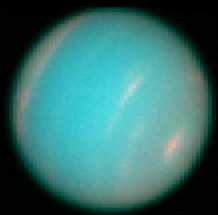
This image shows the new Great Dark Spot of Neptune, which was discovered using the Hubble Space Telescope. The image shown here, shows a large "hole" in the clouds of Neptune in pink, in the northern
...more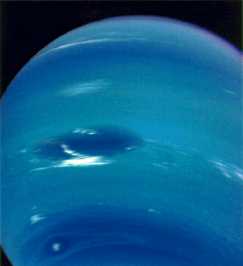
The giant planets have definitely changed since their formation. But how much remains to be seen. Most of the original air of the giant planets remains in place. (The earth-like planets lost most of their
...more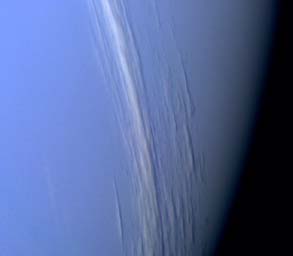
This image shows some clouds known as "cirrus" clouds, extending for many kilometers across the face of Neptune. These clouds are very high up, for they can be seen to cast shadows on the lower clouds,
...more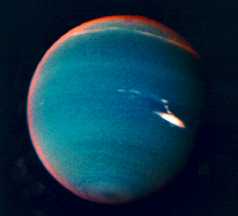
This image of Neptune uses false colors to show where the smog is. The smog of Neptune can be seen in red along the edge of the image. This smog haze is found very high up in the atmosphere, over the clouds
...more
Like Jupiter and all the giant planets, Neptune's appearance shows a striped pattern of clouds. Other cloud shapes seen over time include a small dark spot, the "scooter" and the Great Dark Spot. The Great
...more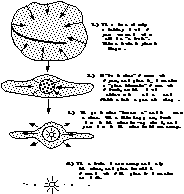
Scientists think that the solar system formed out of a spinning cloud of hydrogen and helium molecules. Because the cloud was spinning, it flattened into a frisbee shape, just like a ball of pizza dough
...more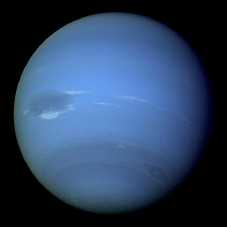
Neptune was discovered in 1846. But it wasn't discovered using a telescope. Scientists used math instead! They watched Uranus and saw that its orbit was doing weird things. They knew another planet had
...more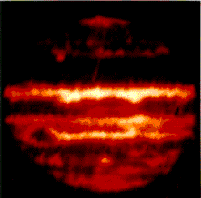
The picture shows places on Jupiter which are hot. Jupiter is a very warm place, as shown in the picture, sort of like a warm log in the fireplace which gives off heat. Like Jupiter, Neptune also gives
...more













